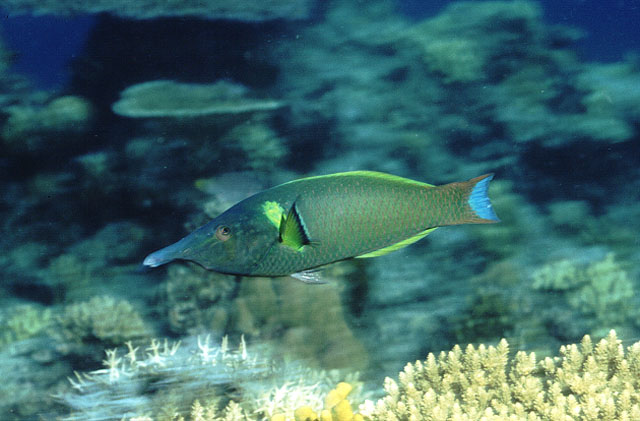| Labridae (Wrasses) |
| 30 cm SL (male/unsexed) |
|
reef-associated; marine; depth range 0 - 35 m |
| Indo-Pacific: Cocos-Keeling to the Hawaiian, Marquesas and Tuamoto islands, north to southern Japan, south to Rowley Shoals in the eastern Indian Ocean and Lord Howe and Rapa islands. Replaced by Gomphosus caeruleus in the Indian Ocean (Ref. 37816). Hybrid with Thalassoma lunare documented from Cassini Island, Western Australia and reported from the Great Barrier Reef; with Thalassoma duperrey, observed from Hawaii (Ref. 57557). |
|
Dorsal spines (total): 8-8; Dorsal soft rays (total): 13-13; Anal spines: 3-3; Anal soft rays: 11-11. Identified by long snout when adult and distinguished by color or geography from its sibling G. caeruleus (Ref. 48636). Small juveniles lack the elongate snout (Ref. 37816). |
| A solitary species (Ref. 90102) found in coral-rich areas of lagoon and seaward reefs to a depth of at least 30 m (Ref. 1602, 58302). Benthopelagic (Ref. 58302). Feeds mainly on small benthic crustaceans, sometimes on small fishes, brittle stars, and mollusks (Ref. 2334). Minimum depth reported taken from Ref. 128797. |
|
Least Concern (LC); Date assessed: 12 May 2008 Ref. (130435)
|
| harmless |
Source and more info: www.fishbase.org. For personal, classroom, and other internal use only. Not for publication.
